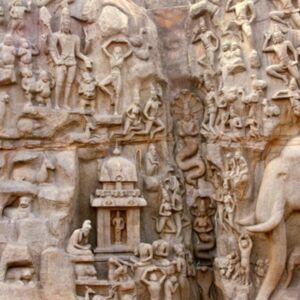Namaste!
Welcome to your wellbeing centre
Celebrating 21 years of serving the Adelaide Yoga community
Āsana

Āsana means posture in Sanskrit. In modern yoga practice postures of many varied kinds are synonomous with yoga. It hasn't always been so, and there are some who regret that the non-postural associations of yoga are being lost. Perhaps classes that almost exclusively concentrate on postures should be called Āsana classes, not yoga classes!
Meaning of the word
In its earliest meanings āsana is a literal seat or throne, a chair one would sit upon. It later shifts to be a mode of sitting, one's posture. From there it later becomes a word used to denote complex bodily positions such as those we know in modern postural yoga.
Origins of Āsana
The short aphorisms of the Yoga Sūtra which have become the bible of modern yoga, curiously do not include complex postures anything like those we see in modern postural yoga, even though one of the auxillaries, or limbs it gives for the attainment of yoga is indeed Āsana. The aphorisms tell us only that the posture should be steady and comfortable in order to proceed to prānāyāma, concentration and meditation. The original commentary upon the sutras does describe twelve postures, all of which are seated postures to be mastered until they are steady and comfortable, able to be sustained through lengthy sessions of prānāyāma and meditation.
Non-seated postures are not taught in any texts until the Haṭha yoga texts emerge from the tenth century CE. That is definitely not to say they did not exist. We know from a number of different sources that asetics had practiced extreme postures, as a part of their austerities. The Greek historians who traveled with Alexander the Great (c. 330 BCE) reported Indian ascetics practising physical postures which they would hold for the whole day in the blazing sun and the pouring rain without flinching, poses such as hanging upside down or standing on one leg holding weights overhead. The Buddha (c. 500 BCE) is known to have associated with ascetics and participated in self-mortifying practices of a similar kind prior to his discovery of the Middle Path.
The detail from the seventh century CE rock scultpure relief pictured shows such an ascetic standing on one leg in what we might call tree pose, with his arms raised, and it looks as though he is holding a boulder overhead. It is popularly called Arjuna's Penance. Notice the little cat down in the bottom right in the same pose (hands raised to the level of the elephant's tusks) with a little following of mice. Perhaps the moral is to beware of false gurus who wish you harm!
Āsana in Haṭha yoga
Haṭha yoga texts emerge from around the tenth century CE. The Haṭha yoga of these texts is not a gentle yoga at all, but still an extreme form of rigorous practice, that includes bodily purification, postures, prānāyāma, and so on with an objective of forcing the serpent power to rise. It emerges as an ascetic tradition, to be practiced by renunciates.
The first time a non-seated posture is described is in the 10 -11th century CE, in the Vimānārcanākalpa, which describes the arm balancing posture Mayūrāsana (Peacocks pose). Also in the 10-11th Century CE is a text that describes the origins of āsana as having been taught by Śiva, 84 poses in all. So this number 84 is repeated, with several texts describing 84 poses, but not necessarily the same 84.
Postures in Modern Yoga
The shift to the world of postural yoga we know today dates to the late 19th century. To combat the colonial sterotype of Indians as being physically degenerate, a culture of physical exercise emerged, which began to fuse practices of western gymnastics with practices of yogāsana. So it is that many of the poses, which sound "traditional" with their Sanskrit names, are in fact created since 1850, some of them in the twentieth century and some as late as the twenty-first century.
Poses with modern origins
These are some examples and it is certainly not an exhaustive list.
Late 19th century
Parighāsana - gatelatch pose
Pārśvottānāsana - intense side stretch pose, the straightlegged forward fold over one leg
Nāvāsana - boat pose
These poses are from Scandanavian gymnastics.
20th century
Vīrabhadrāsana - Warrior poses 1, 2 and 3
Trikonāsana - Triangle pose
Adho Mukha Śvānāsana - Downward Dog
Author: Tina Shettigara
Related articles
Get Directions
Contact Us
Yoga Spirit Studios
194 Henley Beach Rd
Torrensville SA 5031
Phone: (08) 8352 7823
Email: info@yogaspirit.com.au